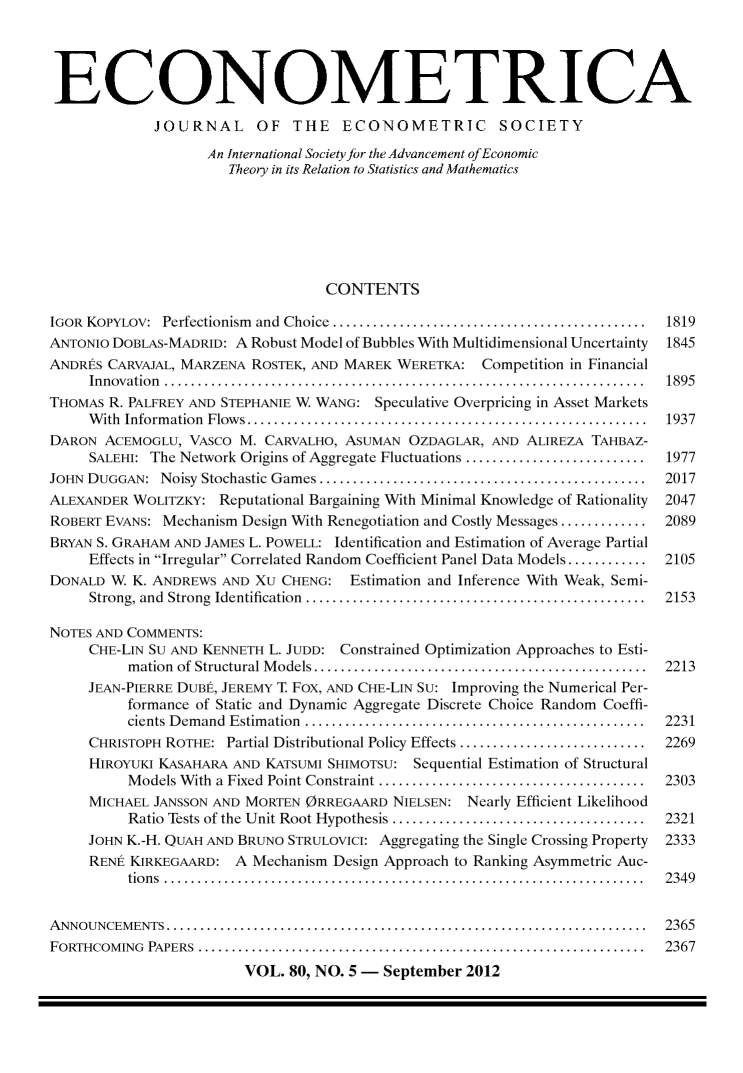
Sign Restrictions, Structural Vector Autoregressions, and Useful Prior Information
This paper makes the following original contributions to the literature. (i) We develop a simpler analytical characterization and numerical algorithm for Bayesian inference in structural vector autoregressions (VARs) that can be used for models that are overidentified, just‐identified, or underidentified. (ii) We analyze the asymptotic properties of Bayesian inference and show that in the underidentified case, the asymptotic posterior distribution of contemporaneous coefficients in an n‐variable VAR is confined to the set of values that orthogonalize the population variance–covariance matrix of ordinary least squares residuals, with the height of the posterior proportional to the height of the prior at any point within that set. For example, in a bivariate VAR for supply and demand identified solely by sign restrictions, if the population correlation between the VAR residuals is positive, then even if one has available an infinite sample of data, any inference about the demand elasticity is coming exclusively from the prior distribution. (iii) We provide analytical characterizations of the informative prior distributions for impulse‐response functions that are implicit in the traditional sign‐restriction approach to VARs, and we note, as a special case of result (ii), that the influence of these priors does not vanish asymptotically. (iv) We illustrate how Bayesian inference with informative priors can be both a strict generalization and an unambiguous improvement over frequentist inference in just‐identified models. (v) We propose that researchers need to explicitly acknowledge and defend the role of prior beliefs in influencing structural conclusions and we illustrate how this could be done using a simple model of the U.S. labor market.




